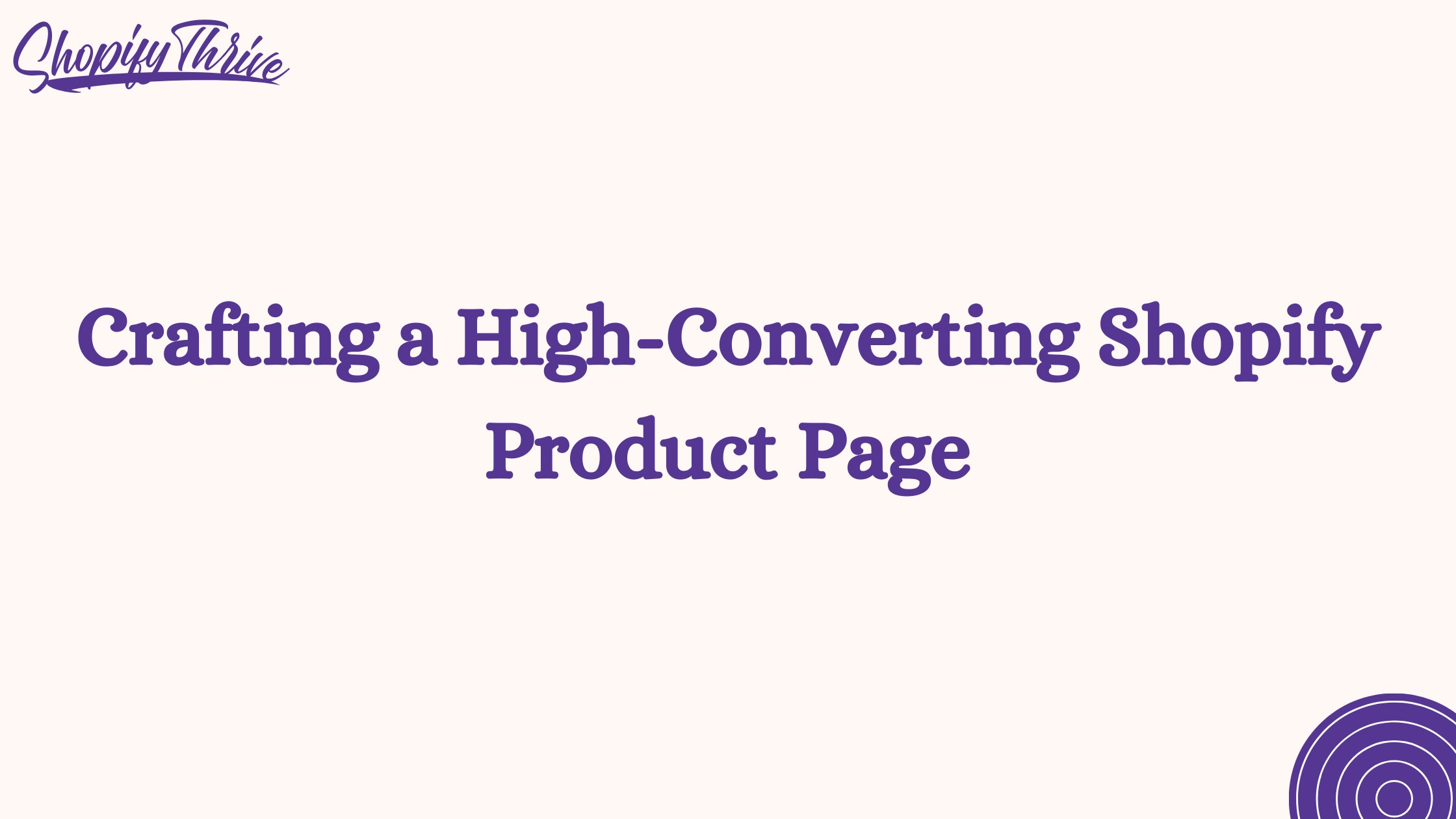
Noor
Crafting a High-Converting Shopify Product Page
- July 31, 2023
- , 6:20 pm
- , Shopify Tips
Introduction
In the competitive world of e-commerce, having a product page that converts visitors into customers is paramount to your Shopify store’s success. A well-designed and strategically optimized product page can significantly impact your sales and revenue. In this comprehensive guide, we will explore a step-by-step approach, following the MECE framework, to create a high-converting Shopify product page that will leave your competition behind.
1. Understanding Your Target Audience
Before delving into the specifics of your product page, it’s crucial to have a deep understanding of your target audience. Conduct thorough market research to identify their preferences, pain points, and motivations. Understanding your audience allows you to tailor your product page to resonate with potential customers effectively.
2. Crafting an Engaging Product Title and Description
The product title and description are the first elements visitors see on your page, so make them captivating and informative:
- Product Title: Keep it concise, descriptive, and use relevant keywords to improve search engine visibility.
- Product Description: Create a compelling narrative around your product, highlighting its unique features and benefits. Use bullet points and formatting to enhance readability.
3. Showcasing High-Quality Product Images and Videos
Visuals play a significant role in capturing the attention of your audience. Provide multiple high-resolution images and videos of your product from different angles and in various use-cases. Use the following guidelines:
- High-Quality Images: Invest in professional product photography to showcase your product in the best light.
- Product Videos: Consider creating short and engaging videos that demonstrate the product’s features and how it solves customers’ problems.
4. Utilizing Persuasive Call-to-Action (CTA) Buttons
A well-designed call-to-action button can make all the difference in encouraging visitors to take the desired action:
- Strategic Placement: Place the CTA button prominently above the fold and throughout the page for easy access.
- Compelling Text: Use action-oriented and persuasive language in your CTA text, such as “Buy Now,” “Add to Cart,” or “Get Yours Today.”
5. Incorporating Trust Signals and Social Proof
Build trust with your potential customers by including trust signals and social proof:
- Customer Reviews and Testimonials: Showcase genuine reviews and testimonials from satisfied customers.
- Trust Badges: Display security badges, certifications, and guarantees to assure visitors of a safe shopping experience.
- Customer Ratings: Highlight average customer ratings and the number of reviews to instill confidence.
6. Providing Detailed Product Specifications
Customers often seek detailed information about the product before making a purchase:
- Technical Specifications: Include specifications such as size, dimensions, weight, material, and color options.
- Use-Cases and Benefits: Describe how the product can solve specific problems or enhance the customer’s life.
7. Implementing Responsive Design
With an increasing number of users accessing websites on mobile devices, it’s crucial to ensure your product page is mobile-friendly:
- Responsive Layout: Design your product page to adapt seamlessly to various screen sizes and devices.
- Fast Loading Speed: Optimize images and code to reduce loading times and provide a smooth user experience.
8. Offering Clear Pricing and Shipping Information
Transparency regarding pricing and shipping costs is essential to avoid cart abandonment:
- Clear Pricing: Clearly display the product’s price, any discounts, and special offers.
- Shipping Details: Provide information about shipping options, delivery times, and any associated costs.
9. Creating Urgency and Scarcity
Encourage visitors to make a purchase by instilling a sense of urgency and scarcity:
- Limited-Time Offers: Use countdown timers to showcase limited-time promotions and discounts.
- Stock Availability: Display the number of items left in stock to create a sense of scarcity.
10. Adding Related Products and Cross-Selling Opportunities
Maximize your sales potential by offering related products and cross-selling options:
- Related Products: Suggest complementary items that customers may be interested in.
- Frequently Bought Together: Offer bundles or packages of related products at a discounted price.
11. Optimizing for SEO
Enhance your product page’s visibility in search engine results:
- Keyword Research: Identify relevant keywords and incorporate them naturally into your product title, description, and content.
- Meta Tags and URLs: Optimize meta tags, descriptions, and URLs with target keywords.
Conclusion
Creating a high-converting Shopify product page requires a strategic approach that considers your target audience, engages them with compelling visuals and content, and builds trust through social proof and trust signals. By incorporating the MECE framework and following the guidelines outlined in this comprehensive guide, you can optimize your product page for conversions and take your e-commerce business to new heights. Remember that continuous testing and optimization are key to refining your product page over time and ensuring ongoing success in the ever-evolving world of online retail.
If you enjoyed this blog post, make sure to check out some of our other useful Shopify tips here: Shopify Tips Archives | Shopify Thrive
Ready to transform and grow your shopify brand?
See why companies like Lash Artisan, Lust For Lashes, joemetry.co and more
launched their shopify Brand With ShopifyThrive.
